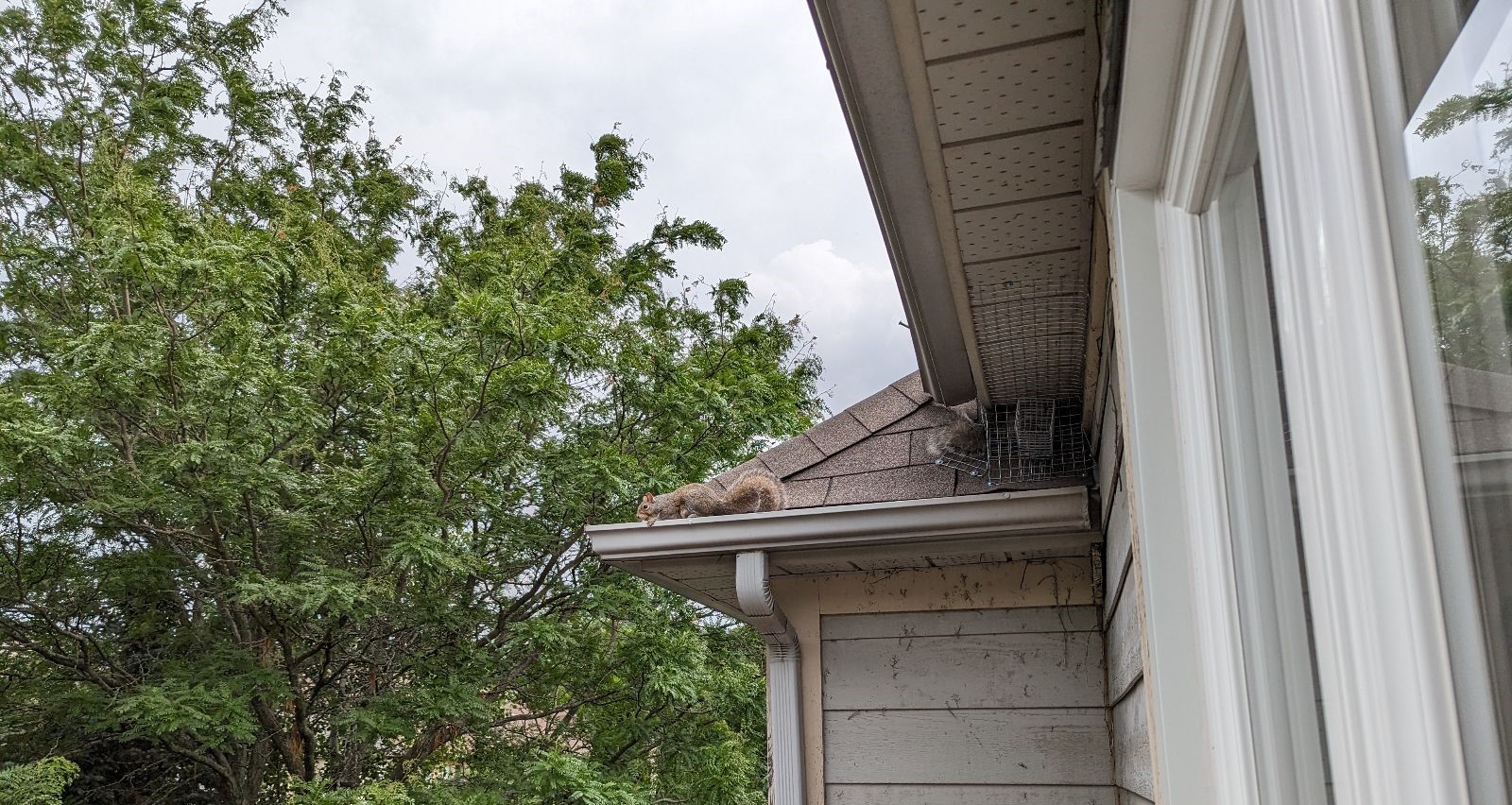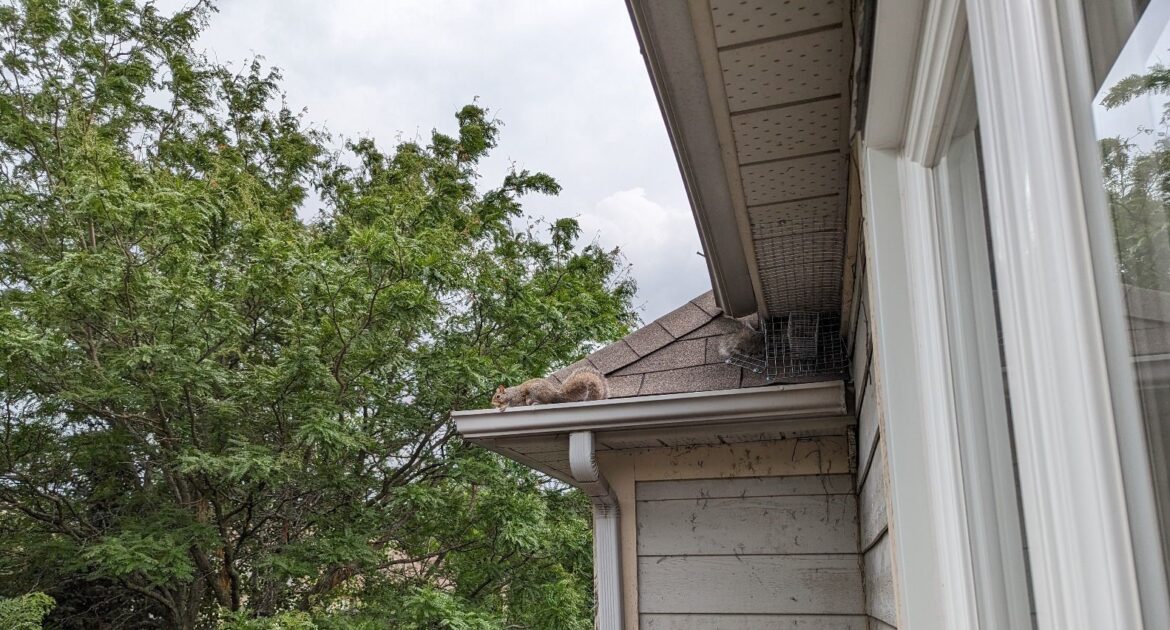As the vibrant leaves of Minneapolis begin their transformation into captivating shades of autumn, the city faces a quieter yet intriguing shift in its urban wildlife—squirrels. These nimble creatures, often seen busily darting across parks and streets, exhibit fascinating changes in behavior as temperatures start to drop. Cool-weather brings about a myriad of adjustments in squirrel activity, from increased food gathering to more frequent nesting habits. Understanding these changes is crucial not just for the curious observer but for anyone dealing with potential infestations in their homes and properties.
The cooler weather significantly impacts squirrel behavior, triggering a noticeable uptick in their food storage activities and alterations in their nesting patterns. Skedaddle Humane Wildlife Control in Minneapolis has seen an increase in calls during these months as squirrels begin to seek out warmer shelter.
For effective wildlife control, recognizing these seasonal behaviors is essential. The rest of this article will explore the specific ways cooler temperatures affect squirrel activity and offer practical guidance on how to get rid of squirrels humanely and efficiently. We’ll delve into the science behind their food-hoarding instincts, the changes in their nesting habits, and how to protect your property from becoming an appealing refuge for these determined critters.
Squirrel Behavior in Cooler Weather
As temperatures drop, squirrels become particularly active in their quest to prepare for the impending colder months. One of the primary activities they engage in is the search for shelter. During this time, squirrels look for warm, secure places to build their nests. This often leads them to explore attics, garages, and even chimneys in homes, as these sheltered areas offer the protection they need from the harsh weather conditions.
Simultaneously, squirrels ramp up their food storage activities. This natural instinct is driven by the need to ensure a steady food supply during the months when resources are scarce. You might notice squirrels scurrying around, burying nuts and seeds in various locations or stashing them in hidden spots within their chosen shelter.
These behaviors can inadvertently lead to squirrels venturing into our homes and properties. Our attics, basements, and even the spaces between walls can become attractive nesting sites. The search for warmth and food security makes these determined creatures more inclined to enter human habitats, risking potential disturbances and damage.
Common Signs of Squirrel Activity
As cooler weather sets in, we might find ourselves sharing our homes with some uninvited guests. Squirrels, in their quest for warmth and food, often leave a trail of telltale signs that indicate their presence. Knowing what to look for can help us take timely action to safeguard our property.
One of the most common signs is hearing unusual noises in the attic or walls, particularly in the early morning or late evening when squirrels are most active. These sounds can range from scratching and scampering to occasional chirping. Another indicator is visible damage to exterior trim or vents. Squirrels are nimble and persistent, often chewing through wood, siding, and vent covers to gain access to our homes. Additionally, you might spot squirrels entering and exiting your home through small openings or gaps, especially around the roofline or eaves.
As food becomes scarce, these furry intruders become more daring in their search for sustenance and shelter. We might notice more frequent sightings of squirrels in our yards, frantically digging in garden beds or flower pots to bury their food. This increased activity directly correlates with their preparation for winter, making our homes particularly attractive due to the warmth and safety they provide.
Risks Associated with Squirrel Infestations
If squirrels have made their way into our homes, they can cause significant and costly damage. One of the most concerning risks is their penchant for chewing on electrical wires. This behavior not only damages our home’s electrical infrastructure but can also pose a severe fire hazard. Damaged wires can spark, potentially leading to fires that threaten the safety of our family and property.
Beyond the risk of fire, squirrels can wreak havoc on our insulation. They often tear through insulation to build their nests, reducing its effectiveness and potentially leading to increased heating costs during the winter months. The damage doesn’t end there; these critters tend to chew on wooden structures, plastic pipes, and anything else they can get their teeth on, which can result in expensive repairs.
Health concerns are another critical issue associated with infestations. Squirrel droppings and urine can accumulate in nesting areas, leading to foul odors and the potential spread of diseases. Additionally, squirrels may carry parasites such as fleas and ticks, which can transmit illnesses to humans and pets.
Trying to handle an infestation on our own might seem like a cost-effective solution, but it can lead to several unexpected problems. While we might think setting up a trap or sealing some entry points will do the trick, DIY methods can often be ineffective and even risky. Handling wild creatures without proper knowledge can result in injuries, both to us and the animals. Moreover, there’s a significant risk of inadvertently breaking laws concerning wildlife treatment.
For instance, some common DIY methods might involve using harmful chemicals or traps that are illegal in certain jurisdictions. These approaches not only pose ethical concerns but can also lead to hefty fines if we’re found non-compliant with local wildlife regulations. Additionally, improperly handling a trapped squirrel can cause undue stress and harm to the animal, leading to an inhumane situation that we’re better off avoiding.
Humane treatment and legal compliance in wildlife control aren’t just about following rules—they’re about ensuring that our actions do not cause unnecessary suffering. Engaging professional services guarantees not only our safety but also the welfare of the animals involved. These experts utilize humane methods to remove wildlife, ensuring minimal impact on the animals and our property.
Skedaddle Squirrel Removal Solutions
At Skedaddle Humane Wildlife Control, we prioritize both humane treatment and effective solutions in handling squirrel intrusions. One of our innovative techniques involves the use of specially designed one-way doors. These doors are installed at key entry points, allowing squirrels to exit the premises safely but preventing their re-entry. This method ensures that the removal process is smooth and stress-free for the animals.
Unlike traditional methods that rely on live trapping and relocation, which can cause significant distress and legal complications, we focus on exclusion and habitat modification. By identifying and sealing potential entry points, we prevent future invasions, ensuring long-term peace of mind. Our approach is rooted in understanding squirrel behavior and creating a solution that aligns with their natural instincts while protecting your home.
The Benefits of Hiring Professional Wildlife Technicians
Hiring our professional wildlife technicians for squirrel removal offers several advantages. Our team at Skedaddle Humane Wildlife Control provides humane removal methods and comprehensive exclusion methods that keep wildlife out of a property without the ability to return. With experienced technicians and a commitment to customer education, you can trust us to handle your wildlife control needs effectively.
We understand the importance of protecting your home and family, and we strive to provide the best possible service. Our approach is not just about removing the animals but also about educating homeowners on preventive measures and maintaining a squirrel-free environment.
Skedaddle Humane Wildlife Control – Your Solution to Squirrel Infestations
During cooler weather, squirrel behavior changes significantly, leading to increased indoor activity as they seek warmth and shelter. This seasonal shift often brings squirrels into our homes, where they can cause extensive and costly damage to electrical wiring, insulation, and structural components. The health risks associated with squirrel infestations, including disease transmission and parasite exposure, further underscore the importance of addressing these issues promptly and effectively.
Professional wildlife control services, like those offered by Skedaddle Humane Wildlife Control, provide substantial benefits over DIY methods. Our humane and exclusion-based approaches ensure that squirrels are removed safely and effectively without harming the animals or violating wildlife regulations. By thoroughly sealing entry points and modifying habitats, we prevent future invasions, providing homeowners with long-term peace of mind.
At Skedaddle, we prioritize humane treatment and innovative solutions to address squirrel activity and infestations. Our unique methods, such as using one-way doors for safe squirrel removal and focusing on exclusion techniques, guarantee not only the humane treatment of wildlife but also effective protection for your home. Our experienced technicians are dedicated to educating homeowners on preventive measures, ensuring a squirrel-free environment.
Understanding squirrel behavior is key to managing their impact on your home. If you are dealing with a squirrel infestation or just want to know how to get rid of squirrels effectively, contact us today to request a quote and learn more about our comprehensive wildlife control services. Let Skedaddle Humane Wildlife Control in Minneapolis provide the expertise and solutions you need to protect your home and family.




